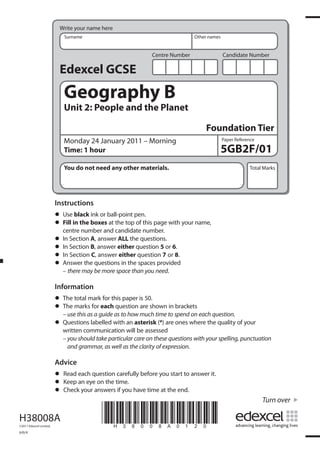Le document est un examen de géographie de niveau GCSE portant sur des thèmes tels que la dynamique de la population, la consommation des ressources et les espaces de vie. Il contient des instructions pour répondre aux questions, ainsi que des questions spécifiques sur les migrations, la consommation des ressources et les pressions sur les zones rurales et urbaines. Les candidats doivent rédiger leurs réponses dans des espaces fournis, en tenant compte de la qualité de l'écriture pour certaines questions.



















